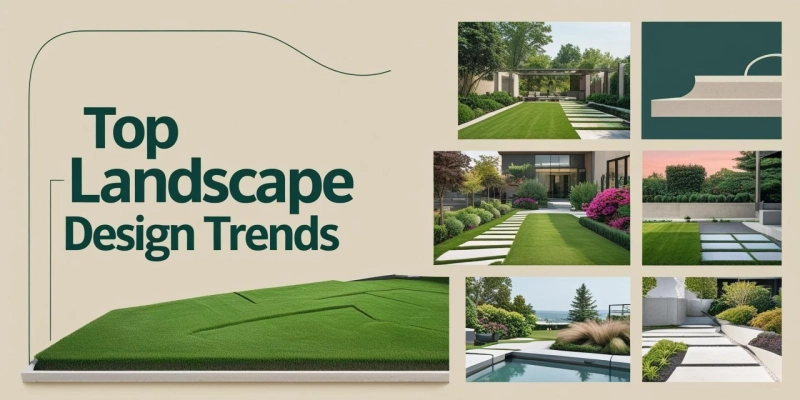Landscape architecture is evolving faster than ever, driven by climate challenges, urban demands, and a global shift toward sustainable living. What was once just about aesthetics is now a critical part of urban resilience, mental well-being, and environmental stewardship. As we navigate 2025, landscape architects are reimagining outdoor spaces with bold, forward-thinking ideas.
Here are the top 10 trends shaping modern landscape architecture in 2025 , blending innovation, nature, and human-centered design.
1. Climate-Responsive Design
With rising temperatures, unpredictable rainfall, and extreme weather, climate-responsive design is no longer optional. Landscape architects are now integrating features that adapt to environmental shifts such as permeable pavements, drought-tolerant plants, green buffers, and flood-control zones. Designs are being built to survive and thrive amid changing conditions.
2. Regenerative Landscapes
Going beyond sustainability, regenerative landscapes aim to heal and restore ecosystems. These spaces don’t just reduce harm , they actively rebuild soil health, improve water cycles, and support biodiversity. Expect more urban rewilding projects and green corridors in cities designed to benefit both people and the planet.
3. Smart Technology Integration
Technology is making its mark outdoors too. From automated irrigation systems to smart lighting, modern landscapes are becoming more efficient and interactive. In 2025, we’re seeing increased use of sensors to monitor soil moisture, plant health, and air quality, allowing for data-driven maintenance and real-time responsiveness.
4. Edible and Productive Gardens
Edible landscaping has moved from backyards to urban parks, school campuses, and commercial spaces. These spaces not only promote local food production but also build community connections and support urban agriculture. Rooftop gardens, vertical farms, and herb walls are becoming essential design elements.
5. Multifunctional Outdoor Spaces
In dense cities, every square foot matters. Outdoor spaces are now designed to serve multiple purposes: a rain garden that manages stormwater, a plaza that hosts events, or a park that doubles as an outdoor classroom. Versatility is key , whether through adaptable layouts, integrated outdoor furniture, or multifunctional features in public and institutional projects.
6. Nature-Driven Mental Wellness Design
The link between nature and mental health is stronger than ever. In 2025, landscape architects are prioritizing designs that promote relaxation, mindfulness, and emotional well-being. Features like sensory gardens, water elements, natural materials, and quiet zones are becoming common, especially in healthcare and educational spaces.
7. Biodiversity as a Design Priority
Monoculture lawns are out; native species and pollinator-friendly planting are in. Today’s landscape architects are creating habitats that support birds, bees, butterflies, and other vital species. The goal is to design spaces that don’t just look good but contribute actively to ecological health.
8. Minimalism with Meaning
While natural and wild aesthetics are trending, there's a clear move toward minimalism — but with depth. Clean lines, neutral palettes, and simple materials are being used to create serene, functional outdoor environments that feel timeless and thoughtful.
9. Community-Led Design Approaches
Community participation is playing a bigger role in how public landscapes are shaped. Designers are engaging with locals to understand needs, values, and cultural stories — resulting in spaces that feel more inclusive, meaningful, and relevant to the people who use them.
10. Circular Materials and Eco-Friendly Construction
Sustainability starts with materials. In 2025, there’s a strong emphasis on reusing, recycling, and sourcing local materials. From reclaimed wood and recycled concrete to biodegradable geotextiles, the materials used are as important as the design itself.
Final Thoughts
Landscape architecture in 2025 is not just about beautifying spaces, it’s about solving real-world problems through thoughtful, inclusive, and sustainable design. Whether it’s restoring the environment, supporting mental wellness, or making cities more livable, the trends shaping modern landscape architecture are as inspiring as they are essential.
If you're planning a new project or simply love good design, these trends offer a glimpse into where the future of outdoor spaces is headed — and it looks greener, smarter, and more human than ever.
Author Bio
Anuj Gupta is a landscape architect and writes about landscape architecture, outdoor space design and interior design.


